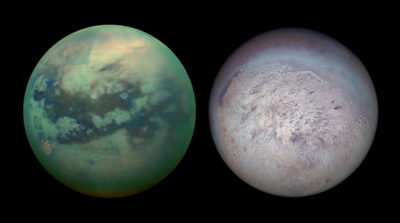Table of Contents

NASA Solar System Ambassador,
Astronomical League Master of Outreach,
Cruise ship speaker on Astronomy & space science,
Amateur astronomer and photographer for 50 years
We all know a large asteroid impact likely caused the demise of the dinosaurs about 65 million years ago. And relatively recent impacts like the 2013 Chelyabinsk incident can cause widespread damage.
But there are also countless other small objects that do nothing more than make a pretty “falling star” in the night sky. How do we understand the risk that a meteor or asteroid might do harm?
Technically, asteroids and comets that may approach the Earth are classified as NEOs (Near-Earth Objects). In 1999 the Torino Scale was invented to assess the seriousness of such a collision, by combining impact risk with kinetic damage potential into a single threat value.
The Torino Scale is color-coded into 5 risk categories, numbered 0 through 10.
Torino Scale
| NO HAZARD (white) | |
|---|---|
| 0 | The likelihood of a collision is zero, or is so low as to be effectively zero. Also applies to small objects such as meteors and bodies that burn up in the atmosphere as well as infrequent meteorite falls that rarely cause damage. |
| NORMAL (green) | |
| 1 | A routine discovery in which a pass near Earth is predicted, that poses no unusual level of danger. Current calculations show the chance of collision is extremely unlikely with no cause for public attention or public concern. New telescopic observations very likely will lead to reassignment to Level 0. |
| MERITING ATTENTION BY ASTRONOMERS (yellow) | |
| 2 | A discovery, which may become routine with expanded searches, of an object making a somewhat close but not highly unusual pass near Earth. While meriting attention by astronomers, there is no cause for public attention or public concern as an actual collision is very unlikely. New telescopic observations very likely will lead to reassignment to Level 0. |
| 3 | A close encounter, meriting attention by astronomers. Current calculations give a 1% or greater chance of collision capable of localized destruction. Most likely, new telescopic observations will lead to reassignment to Level 0. Attention by public and by public officials is merited if the encounter is less than a decade away. |
| 4 | A close encounter, meriting attention by astronomers. Current calculations give a 1% or greater chance of collision capable of regional devastation. Most likely, new telescopic observations will lead to reassignment to Level 0. Attention by public and by public officials is merited if the encounter is less than a decade away. |
| THREATENING (orange) | |
| 5 | A close encounter posing a serious, but still uncertain threat of regional devastation. Critical attention by astronomers is needed to determine conclusively whether a collision will occur. If the encounter is less than a decade away, governmental contingency planning may be warranted. |
| 6 | A close encounter by a large object posing a serious but still uncertain threat of a global catastrophe. Critical attention by astronomers is needed to determine conclusively whether a collision will occur. If the encounter is less than three decades away, governmental contingency planning may be warranted. |
| 7 | A very close encounter by a large object, which if occurring this century, poses an unprecedented but still uncertain threat of a global catastrophe. For such a threat in this century, international contingency planning is warranted, especially to determine urgently and conclusively whether a collision will occur. |
| CERTAIN COLLISIONS (red) | |
| 8 | A collision is certain, capable of causing localized destruction for an impact over land or possibly a tsunami if close offshore. Such events occur on average between once per 50 years and once per several thousand years. |
| 9 | A collision is certain, capable of causing unprecedented regional devastation for a land impact or the threat of a major tsunami for an ocean impact. Such events occur on average between once per 10,000 years and once per 100,000 years. |
| 10 | A collision is certain, capable of causing global climatic catastrophe that may threaten the future of civilization as we know it, whether impacting land or ocean. Such events occur on average once per 100,000 years, or less often. |
Let’s consider how this scale might map into some famous impact events. The 2013 Chelyabinsk meteor would rate as Torino Scale 0, because while it did hit the Earth it had less than 1 megaton of kinetic energy.
The Tunguska Event of 1908 and the event that created Barrington (Meteor) Crater in Arizona are estimated to have had 3-10 megatons of kinetic energy, corresponding to a Torino Scale 8.
The Chicxulub Impact that led to the extinction of the dinosaurs is estimated to have had 100 million megatons of kinetic energy, or Torino Scale 10.
Torino Scale events are only defined for impact that may occur within 100 years. Another way to look at the Torino Scale is the map probability vs kinetic energy as shown below.


NASA, through their Center for Near Earth Object Studies group, publishes an updated list of monitored asteroids which includes the object designation, impact year, impact probability, asteroid mass and velocity, and Torino Scale rating. You can see this table here.
Additional information including mitigation techniques, photos from past impacts and a list of potentially threatening asteroids can be found at the ESA NEOShield site here.
References
- Torino Scale Table; https://en.wikipedia.org/wiki/Torino_scale
- Torino Scale. The scale in metres is the approximate diameter of an asteroid with a typical collision velocity. (licenced under CC BY-SA 3.0) https://en.wikipedia.org/wiki/Torino_scale


